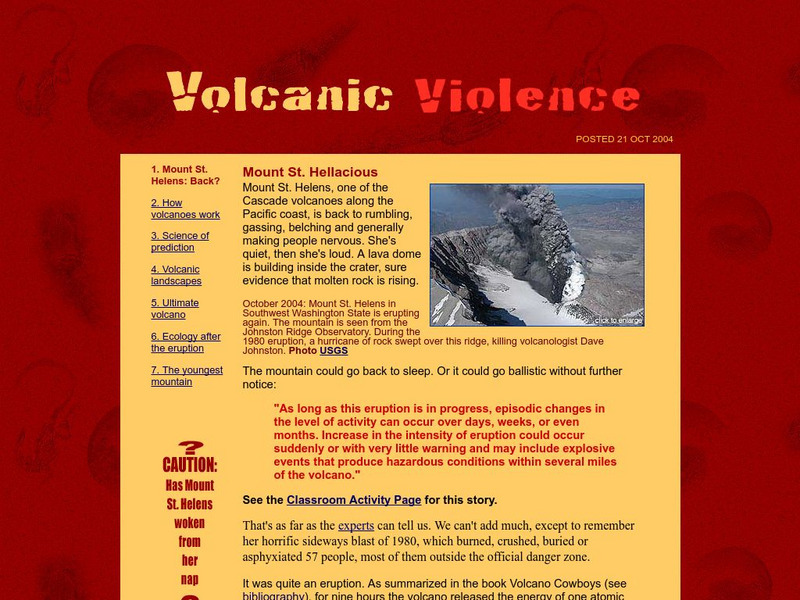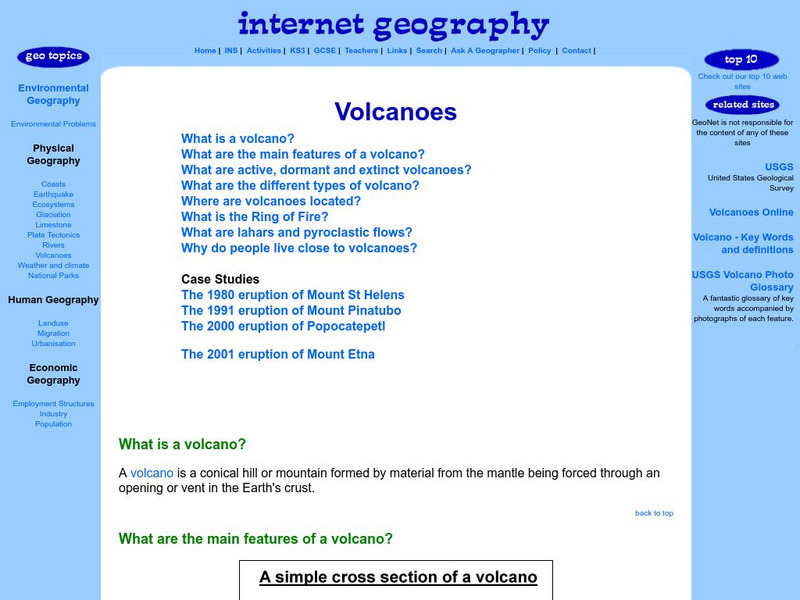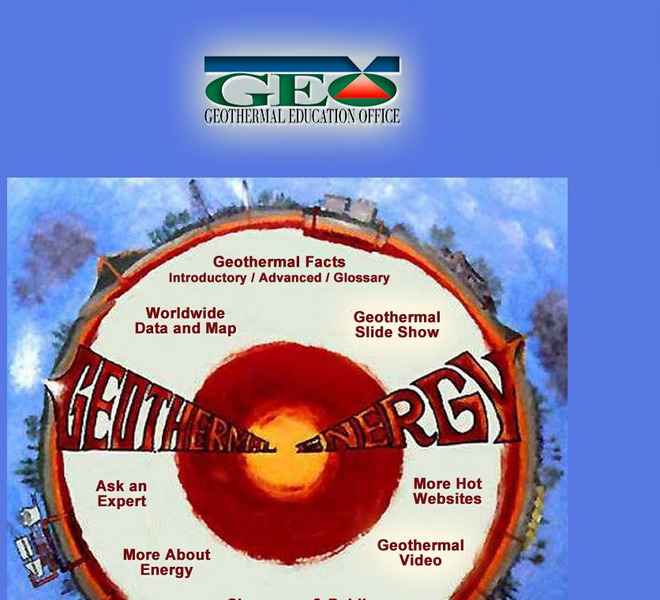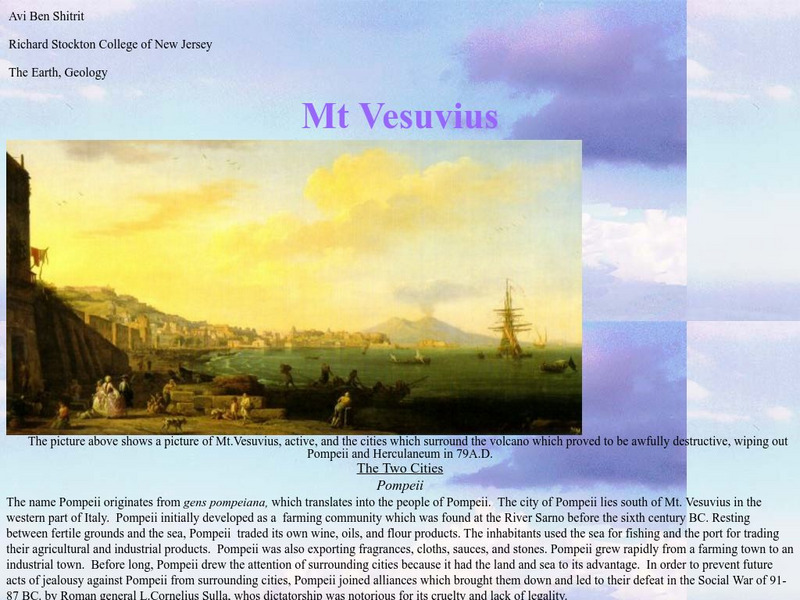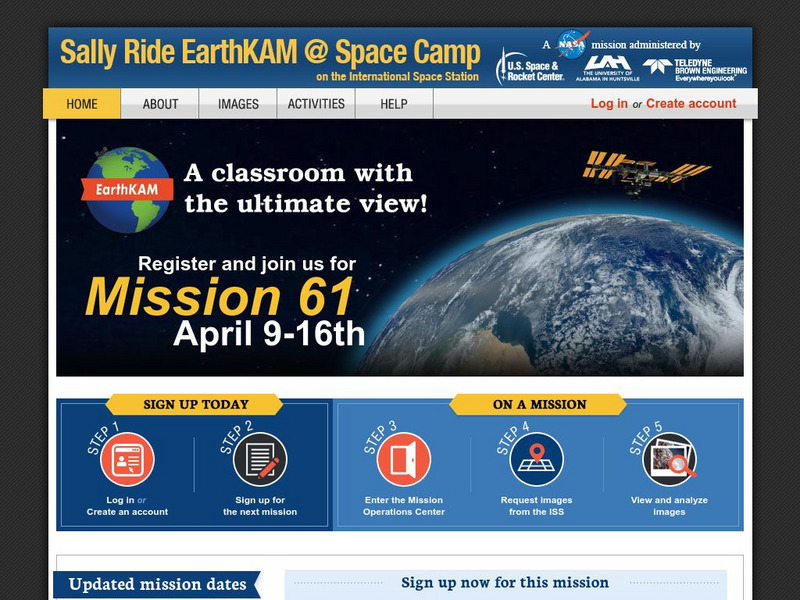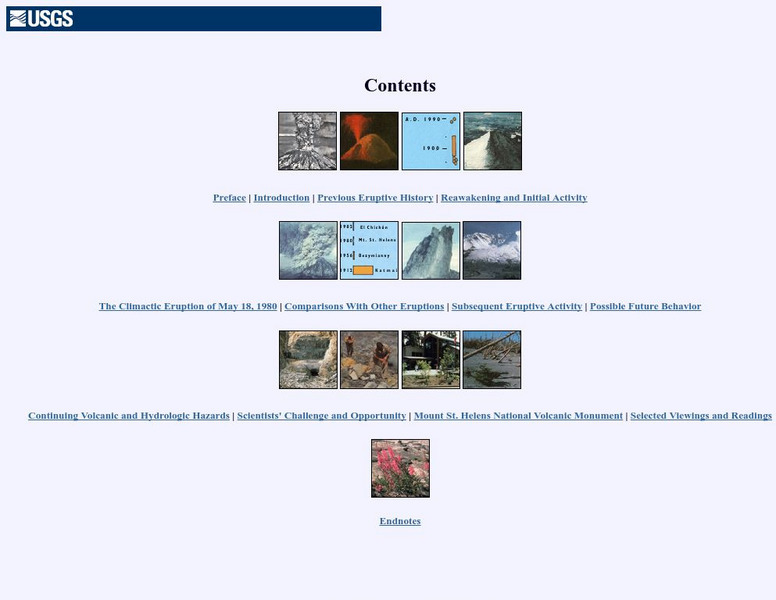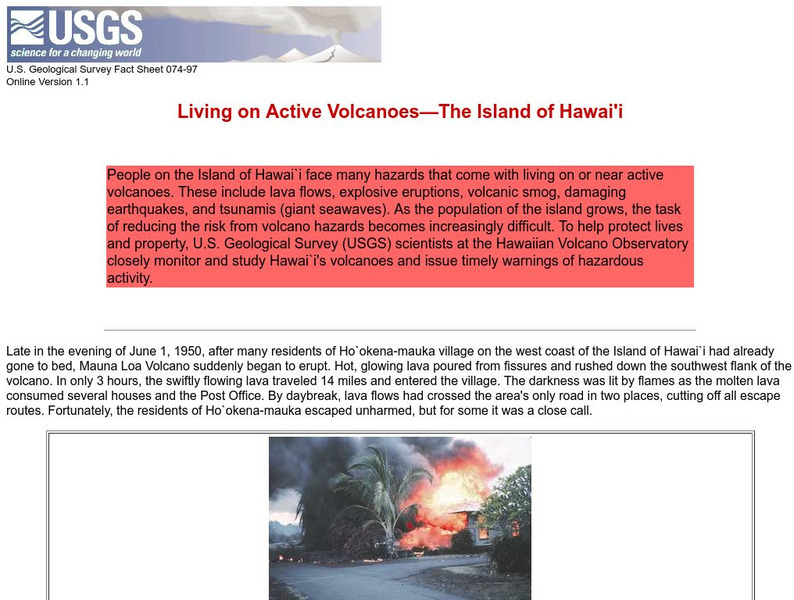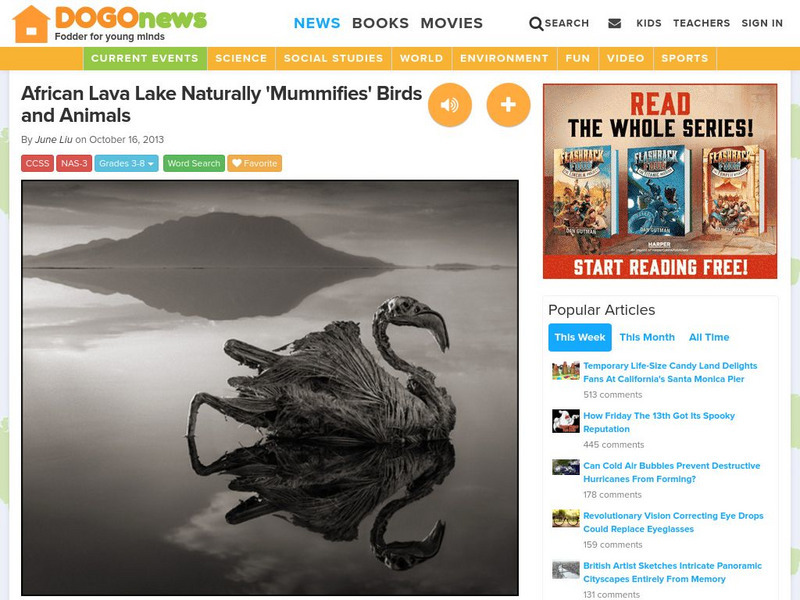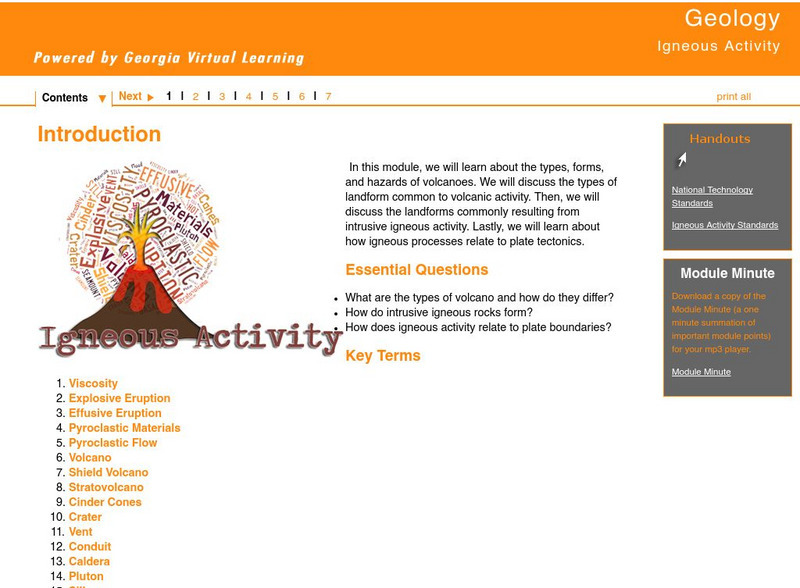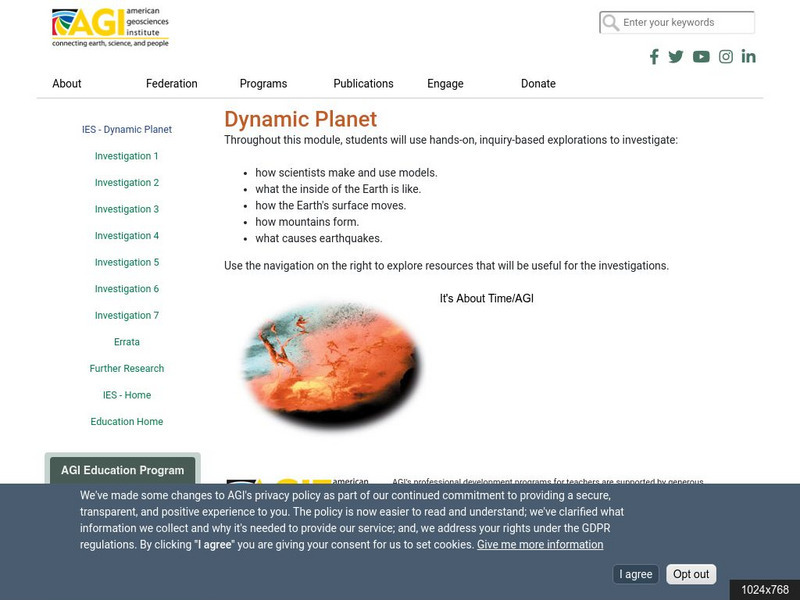Hi, what do you want to do?
University of Wisconsin
The Why Files: Volcanic Violence
Mount St. Helens getting active, how do we forecast or predict volcanoes? How do volcanoes change the landscape? How does life return after a volcano?
Michigan Technological University
Michigan Technological University: Active Volcanoes
Here you'll find a map of all the active volcanoes by region. Links to additional information are also provided.
Other
The Many Faces of Mt. St. Helens
This site is all about Mt. St. Helens. It contains a table of facts about the eruption of the volcano in 1980. Use the menu bar at the bottom of the page to learn more about Mt. St. Helens before, during, and after the May 18th, 1980...
Other
Geo Topics: Volcanoes
This site explains what a volcano is by looking at the features, types, and the location of volcanoes The site also looks at some case studies for further information.
Other
Pella Museum: Paleontology and Geology of Jordan
This English language site focuses on the paleontology, geology, and the fossilized flora, and fauna Jordan. Scientific articles are interspersed with extensive photographs and descriptions of various features.
Other
Geothermal Education Office
This resource for geothermal energy education features a slide show with instructive graphics.
Other
College of New Jersey: Mt. Vesuvius
Interesting site on Pompeii. The first graphic you see is the city of Pompeii. Includes information and graphics about the volcano.
Other
Nasa: Iss Earth Kam
Students get a whole new perspective of the world through images obtained from the International Space Station. Students can even request images to be taken through ISS EarthKAM. Activities and educator guides are provided.
US Geological Survey
Us Geological Survey: Mt. Saint Helen
This page has a graphical and textual table of contents. You can go to an introduction, preface, previous eruption history, reawakening, and more!
US Geological Survey
Us Geological Survey: Volcanoes
This online book by Robert Tilling covers some key concepts such as eruptions, extraterrestrial volcanoes, and people and volcanoes.
US Geological Survey
U.s. Geological Survey: Volcanoes of the u.s.
This graphical and textual journey about the US volcanoes was made by Steven Brantley. There is an introduction, volcanoes and plate tectonics, Hawaiian volcanoes, cascade volcanoes, restless volcanoes, a glossary and further readings.
US Geological Survey
Us Geological Society: Hawaiian Volcanoes
This is an online book about Hawaiian volcanoes. You can learn about the past, present and future of the Hawaiian volcanoes.
US Geological Survey
Living on Active Volcanoes on Hawaii
Living on the island of Hawaii brings you the hazard of living near a volcano. Read about actual eruptions and get scientific seismic information and maps.
US Geological Survey
U.s. Geological Survey: Volcanoes
Six-part interdisciplinary teaching packet. Through the story of the 1980 eruption of Mount St. Helens, young scholars will answer fundamental questions about volcanoes. By learning about volcanoes, students will understand that the...
Oregon State University
Volcano World: Mount St. Helens
Contains images, movies, panoramas, information, and history of the Mount St. Helens eruption (1980) as well information and images of the current state of the volcano.
Smithsonian Institution
National Museum of Natural History: Global Volcanism Program: Volcanoes of the World
The Smithsonian Institute presents a searchable database on volcanoes of the world. Search by region, volcano name, or eruption date. There is also a chronological list of large eruptions during the last 10,000 years.
DOGO Media
Dogo News: Week of 10 21 13: African Lava Lake Naturally 'Mumifies' Animals
Article reports on an unusual lake in Africa in which the water perfectly perserves the remains of dead animals like mummies. Includes video.
BBC
Bbc: Animated Guide: Volcanoes
An animated guide to volcanoes. Learn how they are formed, where they are found and the different types with this interactive slideshow.
Georgia Department of Education
Ga Virtual Learning: Igneous Activity
In this interactive tutorial you will learn about the types, forms, and hazards of volcanoes. The types of landform common to volcanic activity is discussed. Then, the landforms commonly resulting from intrusive igneous activity are...
American Geosciences Institute
American Geosciences Institute: Dynamic Planet
Seven hands-on lessons module where students learn about our dynamic planet. These inquiry-based explorations investigate scientific models, earthquakes and seismic waves, Earth's interior, Earth movements, the lithosphere, plate...
Other
Earthquakes Canada: Tools for Teachers
This webpage offers an excellent collection of teaching resources about earthquakes, tsunamis, volcanoes, and much more. An extensive and extremely well-organized list of "frequently asked questions" regarding the topic, and live...
TeachEngineering
Teach Engineering: How Far Does a Lava Flow Go?
While learning about volcanoes, magma and lava flows, students learn about the properties of liquid movement, coming to understand viscosity and other factors that increase and decrease liquid flow. They also learn about lava composition...
Other
Chicago Science Group: Earth's Changing Surface Virtual Field Trip
Join Science Companion author Belinda Basca and her family as they explore the land forms in Hawaii from a helicopter! Includes suggestions for teacher lessons, student activities, and web resources.
Read Works
Read Works: Volcanoes: Magma Rising: Studying Volcanoes
[Free Registration/Login Required] This two-page PDF nonfiction passage entitled "Volcanoes: Magma Rising: Studying Volcanoes" discusses how they study volcanoes to learn how they work. It is part of Paired Texts: "Volcanoes: Magma...





